Nicknamed the Golden Triangle, the triangular-shaped downtown district of Pittsburgh lies at the fork of where the Allegheny and Monongahela Rivers converge to form the Ohio. It’s a significant spot in the city’s founding and history, and one that still holds significance today, whether one lives, works or travels in Pittsburgh.
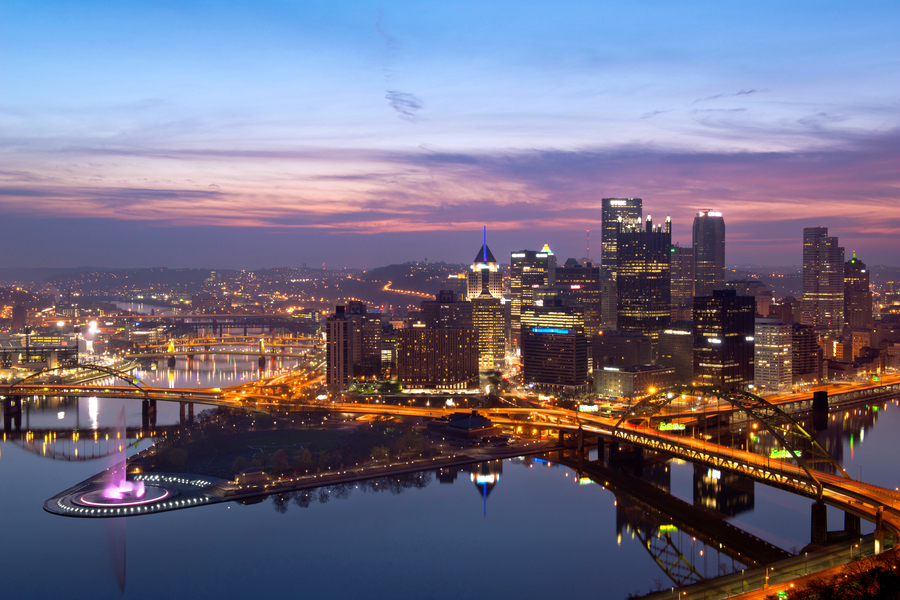
This triangular area of land that splits one river into two is where Pittsburgh got its start (Photo: JP Diroll)
Based on the 1669 claims of explorer and trader Robert de La Salle, the area began with the construction of the French Fort Duquesne at the point of the Golden Triangle, a strategic trade and military location flanked by two rivers on either side. This little area of land would go on to play a role in the French and Indian War, as well as the Seven Years’ War. In the 1700s, the village of Pittsborough was established, eventually being absorbed by the state of Pennsylvania and becoming known as Pittsburgh. The city expanded from this one spot, over and around the forking rivers and Pennsylvania’s western hills and mountains, until it evolved into the sprawling city that you see today.
Over time, the Golden Triangle has been home to significant American industrial leaders, like Andrew Carnegie and Andrew Mellon (after all, this is the Steel City!), and now holds offices for major national corporations, such as U.S. Steel, PNC Bank and Heinz. Pittsburgh’s other nickname is The City of Bridges, which makes sense–you can find 10 of the area’s 446 bridges downtown.
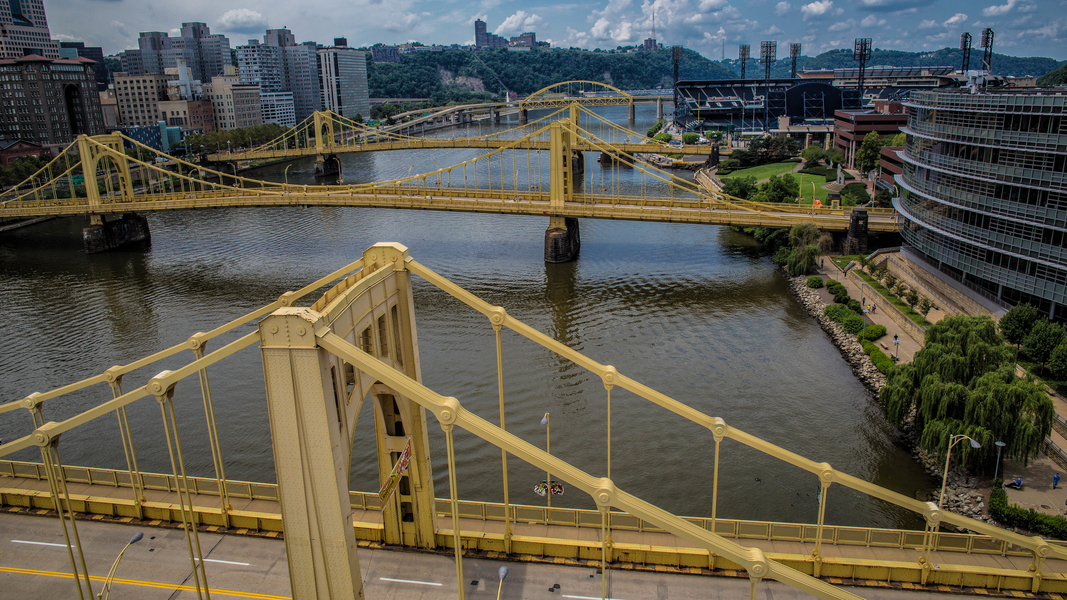
The yellow bridges connecting Pittsburgh’s neighborhoods increase the city’s walkability (Photo: 7Line)
Though typically considered a neighborhood all on its own, the Golden Triangle can also be split into several other districts, based on interest and businesses. The three- or four-block Pittsburgh Central Downtown Historic District is listed on the National Register of Historic Places. In the area surrounding Point State Park, the remnants of Fort Duquesne still stand. Then there are several streets dedicated to the cultural district, where you can find several theaters, as well as the shopping district, with high-end shopping.
Additionally, Pittsburgh is, at its heart, a sports town, with residents who are passionate fans of its Major League Baseball, National Hockey League and National Football League teams. While none of the stadiums are located directly within the Golden Triangle, all are easily within walking distance. Catching a Pirates, Penguins or Steelers game is a chance to experience the city’s enthusiasm and fervor for its teams, while sitting amidst locals, drinking the same beer and eating the same great pierogis.
The city’s normal hubbub grows to a swell around certain annual events, of which there are plenty. From the St. Patrick’s Day Parade and Fringe Festival in the spring; PrideFest, the Pittsburgh Jazz Live International Festival and Pittsburgh Vintage Grand Prix in the summer; to the Pittsburgh Renaissance Festival, Irish Festival and Pierogi Fest in the fall, there’s nearly a guaranteed event every weekend of the year.
Accommodation
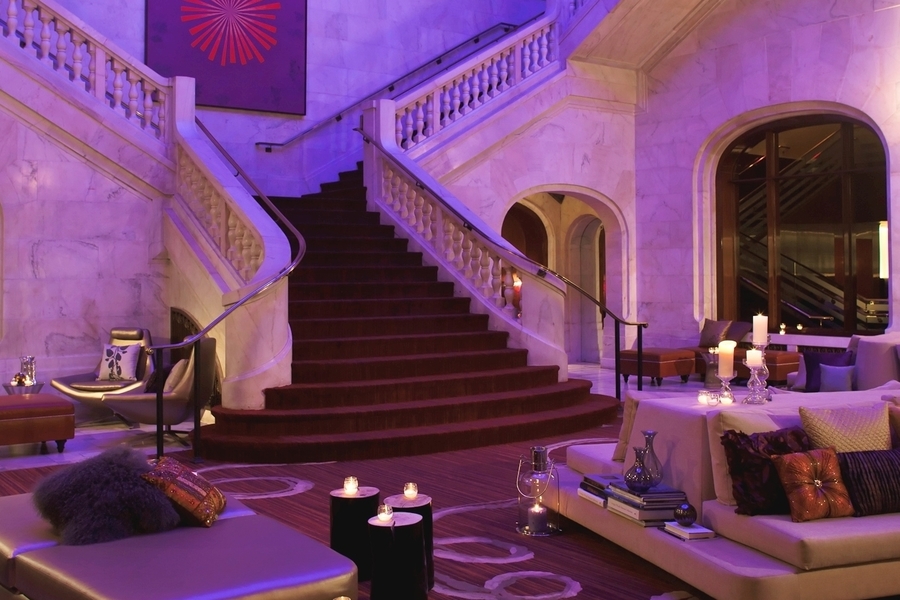
The dramatic lounge immediately welcomes travelers staying at the Renaissance property (Photo: Renaissance Pittsburgh Hotel)
The Renaissance Pittsburgh Hotel (107 6th St.) boasts a dramatic history, acting as an office space, World War II VA hospital, nightlife spot and more before becoming the hotel it is today. The neo-Gothic architecture is stunning, as is the rotunda which begs a glance into the lobby lounge. Possibly the most attractive benefit of this hotel, however, is its location. Easily walk from the property to nearby attractions, both within the Golden Triangle and without. Plus, you can book a room with a river view for glimpses of the bridges plus PNC Park, the home of the Pirates baseball team.
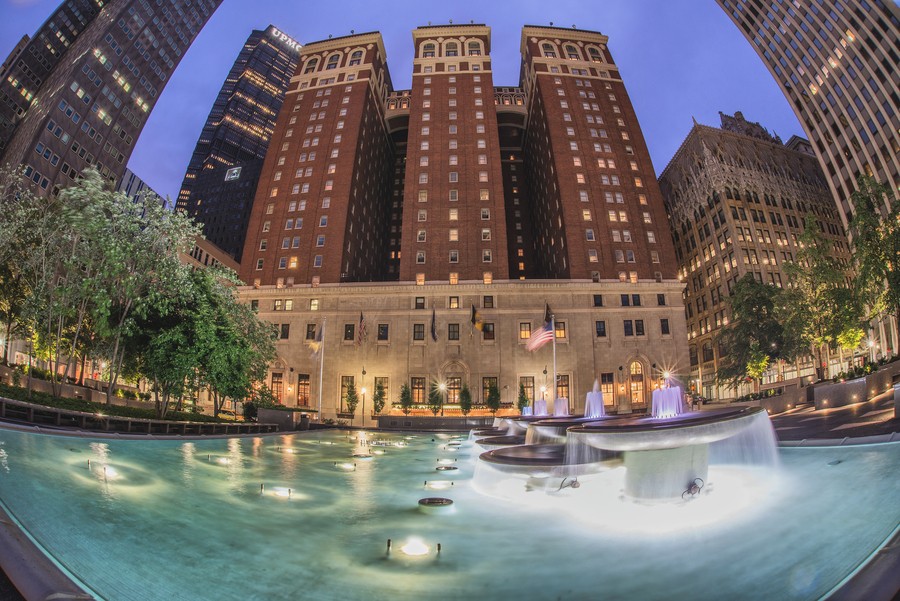
The Omni William Penn Hotel combines modern luxury with historic hospitality (Photo: Dave DiCello)
Another luxury option within the neighborhood, but further from the rivers, is the Omni William Penn Hotel (530 William Penn Pl.). A massive property with nearly 600 guestrooms, the hotel opened in 1916 and offers a classic opulence befitting its debut date. A Historic Hotel of America member, it was built by a wealthy Pittsburgh industrialist, Henry Clay Frick, and was modeled after grand European hotels, in an Old World style. Now, you can enjoy modern amenities alongside high-end sophistication.
Dining
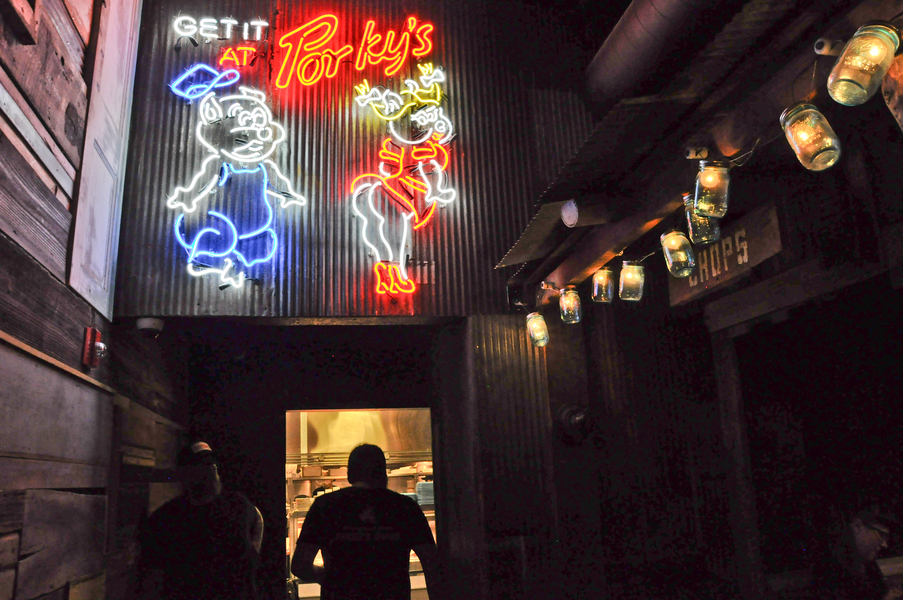
Get to Pork & Beans quick to claim your share of the joint’s popular barbecue (Photo: Richard DeShantz Restaurant Group)
For an unexpectedly accurate depiction of Southern fare, including Texas barbecue and Deep South side dishes, Pork & Beans (136 6th St.) serves up hearty helpings with quirky presentations (think vintage-style place settings and cocktails in tin cans). The dinner menu includes favorites like pimento cheese bruschetta (with green tomato salsa verde, pickled chili vinaigrette, fried shallots and chow chow); pork belly potato skins; the classic Kentucky hot brown (smoked turkey, bacon and tomato open-faced sandwich smothered in a rich sauce); barbecue smoked meats and more.
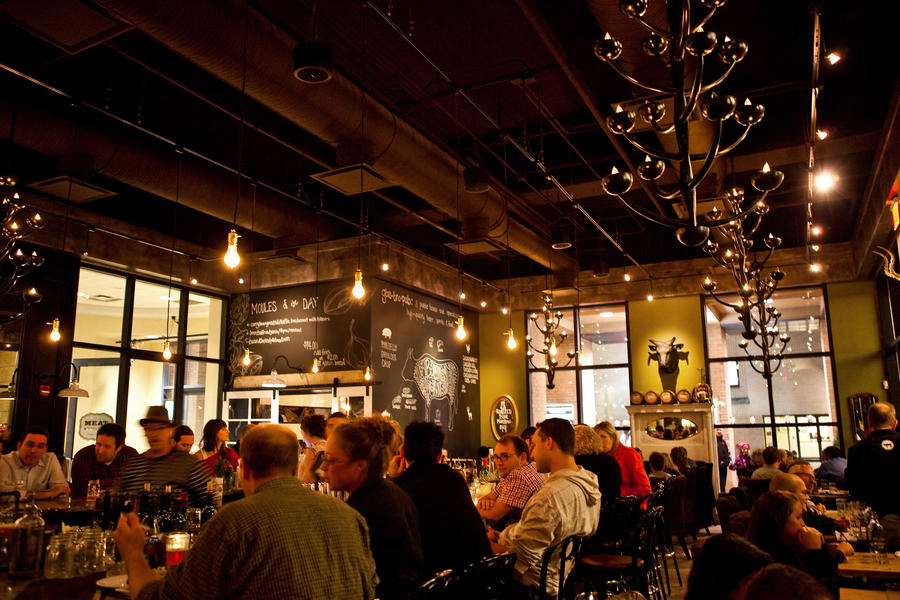
Simple food gets the fine-dining treatment in a comfortable atmosphere at Meat & Potatoes (Photo: Laura Petrilla)
Nearby is Meat & Potatoes (649 Penn Ave.), where comfort food is the name of the game. You’ll pass several theaters before entering the dim lobby, where you can choose to be seated either at a traditional table or at the long bar in the middle of the room, where guests mix and mingle while munching on updated bread and butter dining staples. You’ll find plenty of, yes, meat and potatoes, but this isn’t your simple steak and baked Idaho. Peruse the selection of fried pickles, pig ears and chicken livers; decadent appetizers of bone marrow, tartare and duck liver pate; and entrees ranging from lamb meatballs to duck breast to wagyu beef.
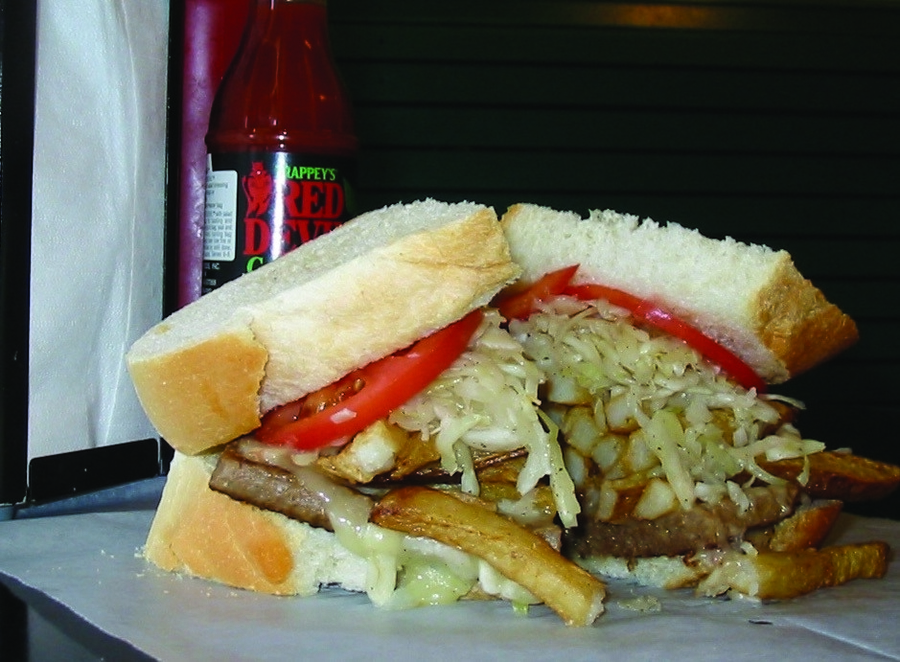
You can find a few regional branches of Primanti Brothers throughout Pennsylvania, but nothing beats the original (Photo: Strip District Neighbors)
Primanti Brothers (2 South Market Square) is arguably Pittsburgh’s most famous eatery. While the original restaurant is located in the Strip District, there’s a location in the Golden Triangle as well. The restaurant’s signature dish is a sandwich with grilled meat, coleslaw, tomatoes and French fries piled high between hearty slices of bread. A James Beard Foundation award-winner, Primanti Brothers has been called an American classic. Established to feed the late-night and early-morning working class with a rib-sticking sandwich, it still caters to the late-night bar goers, but is equally good for a quick (if heavy) lunch.
For a break from hearty fare, how about a Southern California-inspired taco joint named täkō (214 6th St.)? The house tacos come two to an order on house-made tortillas and are filled with mouthwatering fresh ingredients like pork belly, pickled red onions, chicharrones, fried eggs, roasted pineapple and more. Elevated beyond the house classics, the chef tacos are a little more out of the ordinary, filled with fried Spanish octopus, foie gras or roasted lamb and parsnip hummus.
If it’s dessert you’re craving, there’s no better place to scratch that itch than at Millie’s Homemade Ice Cream (246 Forbes Ave.). There are two scoop shops around the city, including one off Market Square in the Golden Triangle. Beyond the delicious ice cream, the folks here have partnered with Macaron Bar Pittsburgh to produce gluten-free macaron ice cream sandwiches.
Museums
Interesting museums dedicated to the city’s long history and culture can be found throughout Pittsburgh , but several are clustered in the Golden Triangle neighborhood.
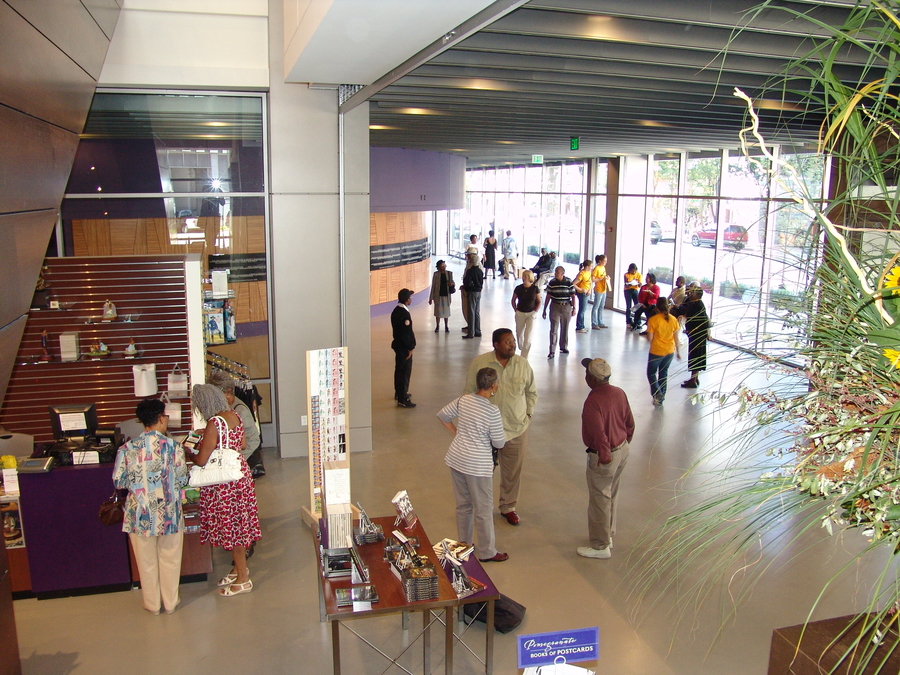
Check the August Wilson Center before your trip to catch performances and workshops for every interest (Photo: August Wilson Center)
The August Wilson Center (980 Liberty Ave.), overseen by the African American Cultural Center, includes several exhibition galleries and a performance theater. In addition to the visual arts on display, ranging from self-portraits to African art, you can catch musical, theatrical and dance performances. For those who want to get a little more hands-on, there are smaller events, such as writing workshops, poetry recitations and lectures.
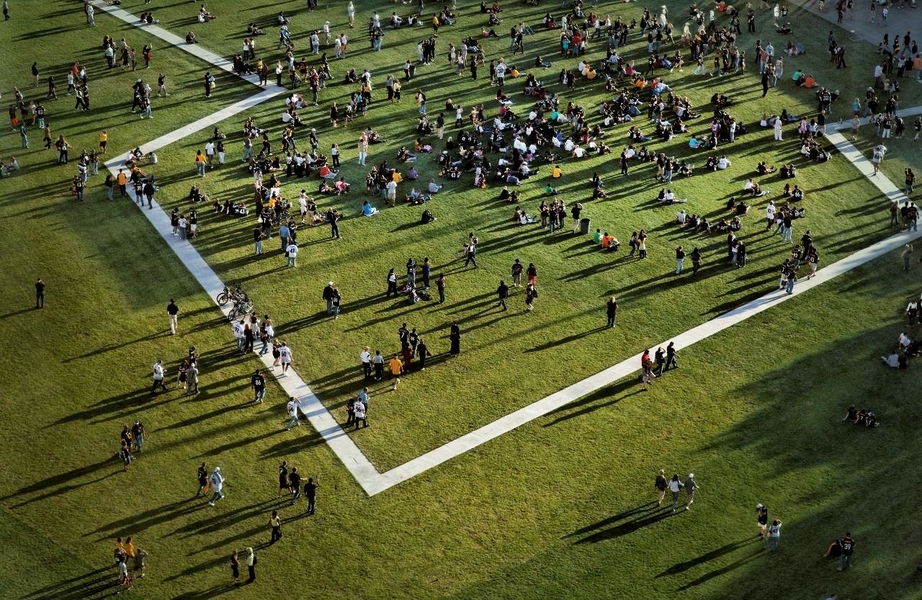
Tourists stand on the remnants of Fort Duquesne (Photo: Melissa Farlow for The Heinz Endowments)
The Fort Pitt Museum (601 Commonwealth Pl.) brings the earliest history of Pittsburgh to life, tracing how the city, which started right in the Golden Triangle, impacted the course of both American and world history. Check out the living conditions of 18th-century residents, a living history display, artifacts from the frontier and battlefield technology from the 1700s. While you’re there, don’t forget to explore the rest of surrounding Point State Park. It’s the only state park in an urban setting and offers beautiful waterfront walks along the rivers.
For a museum of a different kind, Toonseum (945 Liberty Ave.) is dedicated to all things toon, but this is hardly child’s play. The curators at Toonseum take their jobs seriously, educating the public on the historic and cultural impacts of comics and cartoon art. The small museum exhibits more than 100 pieces of art at any time, and the exhibits rotate every few months. As a non-profit, volunteer-ran art gallery, the museum does have somewhat odd hours, so check before you go. Otherwise, enjoy the inexpensive admission fees and maybe even a comic salon, where local artists come together to speak on their current projects.